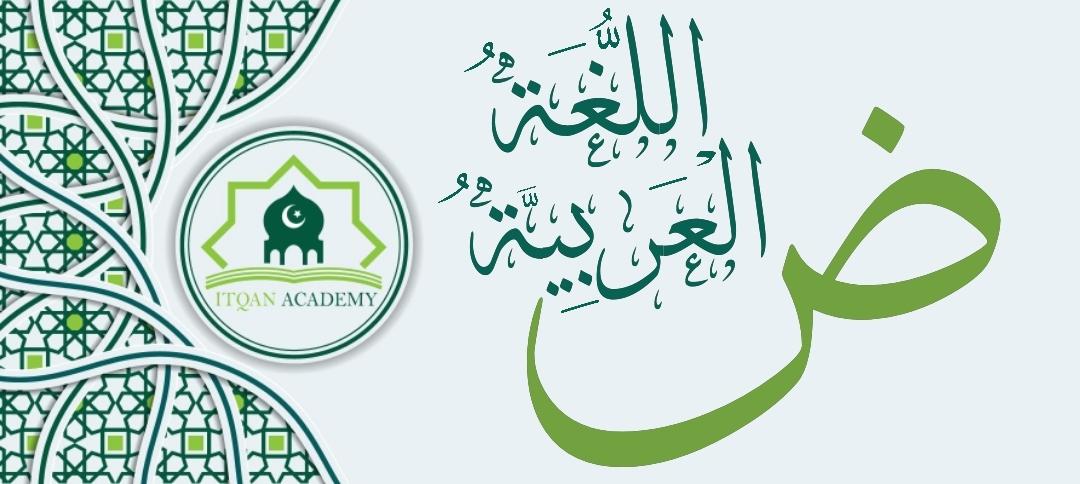
31 October, 2023
The Arabic language, with its intricate script and distinctive phonetics, stands as a testament to the rich cultural and linguistic heritage of the Arab world.
At Itqan Academy, we are dedicated to helping students navigate the beautiful complexity of Arabic by offering comprehensive education on its sounds and letters.
In this essay, we will delve into the fundamental aspects of Arabic phonology and script, and how Itqan Academy plays a crucial role in facilitating this linguistic journey.
Arabic script is unlike any other.
It is written from right to left and has 28 letters, each with distinct forms when written in the initial, medial, and final positions.
These letters are derived from a set of 18 basic shapes, which can be adorned with various diacritics and accents to create different sounds.
Let's take a closer look at some Arabic letters and symbols:
1. أ (Alif): The letter Alif is a vertical stroke that represents a glottal stop.
It is the first letter of the Arabic alphabet and serves as the basis for other vowel sounds.
2. ب (Ba): The letter Ba has two dots above and represents the 'b' sound.
It's fundamental in constructing many Arabic words.
3. ج (Jeem): Jeem is characterized by a dot above and a curvy tail.
It signifies the 'j' sound and is used in numerous Arabic words.
4. و (Waw): Waw, often referred to as "wow" in English, is a looped letter symbolizing the 'w' sound.
It also functions as the Arabic conjunction "and."
5. ه (Haa): Haa is written with two horizontal strokes and is pronounced as 'h.'
It is a pivotal letter in the Arabic script..jpeg)
Arabic phonology is both intricate and elegant, with a wide range of sounds that can be challenging for learners but incredibly rewarding.
The language boasts a consonantal root system, where words are derived from a core set of consonants.
Itqan Academy recognizes the significance of understanding Arabic phonology for achieving proficiency.
The consonant system in Arabic is composed of voiced and voiceless sounds, pharyngeal and glottal articulations, and the presence of emphatic consonants.
These distinctive features contribute to the characteristic sound of Arabic.
For example:
- ق (Qaf): Qaf represents the voiceless uvular plosive, a unique sound in Arabic that is pronounced deep in the throat.
It gives words a distinct Arabic flavor.
- ع (Ayn): Ayn is perhaps one of the most challenging sounds for non-native speakers.
It signifies a voiced pharyngeal fricative and adds depth to the pronunciation.
- خ (Khaa):Khaa is another fascinating sound.
It's the voiceless velar fricative, pronounced deep in the back of the throat, like clearing one's throat.
- غ (Ghain): Ghain is a voiced velar fricative, resembling the French "r."
It's a beautiful and unique sound that adds richness to Arabic words.
At Itqan Academy, we recognize that learning the Arabic language's sounds and letters is a multifaceted journey that requires dedication, patience, and expert guidance.
Our educational programs are designed to provide students with a comprehensive understanding of Arabic phonology and script, ensuring they master the intricacies of the language.
We emphasize practical exercises, extensive listening and pronunciation practice, and the study of classical Arabic texts.
Itqan Academy encourages students to immerse themselves in the language, allowing them to not only grasp its phonetics but also appreciate its poetic beauty and historical significance.
Furthermore, we utilize modern educational technology and innovative teaching methods to make the learning process engaging and effective.
Our educators, who are experts in Arabic linguistics and phonetics, provide personalized guidance to ensure each student's success in mastering Arabic sounds and letters.
The Arabic language, with its unique script and diverse phonetics, is a linguistic gem that offers profound depth and beauty.
At Itqan Academy, we understand the importance of delving into the intricacies of Arabic sounds and letters.
By mastering these fundamentals, students can unlock the full potential of the language and appreciate its rich cultural and historical heritage.
As we explore Arabic letters and symbols like Alif, Ba, Jeem, Waw, and Haa, we uncover the foundations of this remarkable language.
The sounds of Qaf, Ayn, Khaa, and Ghain further add to the linguistic tapestry, making Arabic a language of both complexity and beauty.
Itqan Academy is dedicated to nurturing Arabic proficiency by providing students with a deep understanding of Arabic phonology, script, and language history.
We empower our students to not only master the sounds and letters of Arabic but also to appreciate the profound cultural, linguistic, and historical heritage that this language represents.
Join us on this remarkable journey of discovery at Itqan Academy, where Arabic comes to life through the study of sounds, letters, and the wisdom of the past.
click here below to try your first step of learning the Arabic language:👇
https://api.whatsapp.com/send?phone=+201227545423&text=Salam%20ITQAN%20Academy
read also about our Arabic for Kids course:👇

